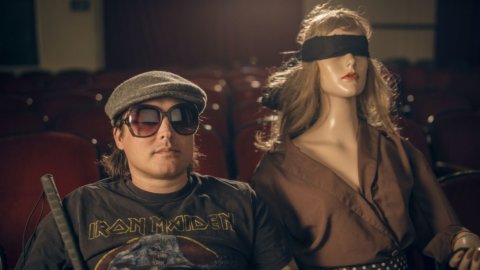A hard, strong, intense film as rarely seen on our screens. As hard as only reality can represent. As strong only as physical and moral pain can be and as dense only as those who know the profession of cinema can understand. Let's talk about Detroit, released in recent days in Italian cinemas directed by Kathryn Ann Bigelow, the first woman to win an Oscar with The Hurt Locker. She also signed one of the cult films of the 90s: Point Break – Breaking point.
Arthur Shopenhauer comes to mind when he reminds us that "The most insignificant present has, compared to the most insignificant past, the advantage of reality" and it is precisely in these terms that the theme proposed by Detroit, the name of the large industrial city home to the major American automobile industries. The film tells of a journey that is only apparent in the recent history of injustices and inequalities between individuals, regardless of the color of their skin. Thousands of black people flocked to this socially and economically complex place in the 60s in search of work, a future and security that they could not find.
The story concerns the dramatic events that involved the city of Detroit, in Michigan, in July 67, in the midst of the great battles for the affirmation of civil rights in the United States. Just a year later, in Memphis, Martin Luther King was assassinated. In particular, the film reports a rather unknown story in the rest of the world: during the riots, in a motel where shots were suspected to have been fired, after a break-in, three black people were killed at the hands of policemen violent, racist and hateful. They will later be arrested and tried.
We don't add anything more on the merits of the story, not because there should be some surprises that we don't want to reveal but only because, in truth, for this type of story, perhaps the end word has not yet been written. The film takes place with a tone defined by some critics as "muscular", as far as the camera is able to give the viewer a dose of adrenaline higher than the average of any banal action film. Speaking of cameras, the use of direct, shoulder-held, exceptionally large-capacity cameras deserves mention. All this, with an editing of the same level so as to let the first part of the film flow without a moment of narrative pause. The protagonists, all of them, are absolutely up to high-level expressive professionalism, capable of making the roles they cover credible.
The first part of the film would almost like it to end as soon as possible as the tension represented is high. The second part instead allows you to catch your breath but an unresolved sense of daze remains in the background. The perpetrators of the violence are shown, inserted, in a legal, political and social context, which seems somehow to be complicit. American cinematography has often and willingly returned to the theme of racism, of the past and the present, and each time it has not been stingy with emotions capable of arousing legitimate and dutiful reproach. One for all: The dark beyond the hedge, three Oscar awards. Bigelow's film worthily continues this tradition and, if only for this, is worth watching. To note an excess of emotional script at the expense of a more careful and in-depth reading on the theme of racial inequalities. However, we are only at the cinema and we can be satisfied with her contribution to keeping the drawer of memory open.





